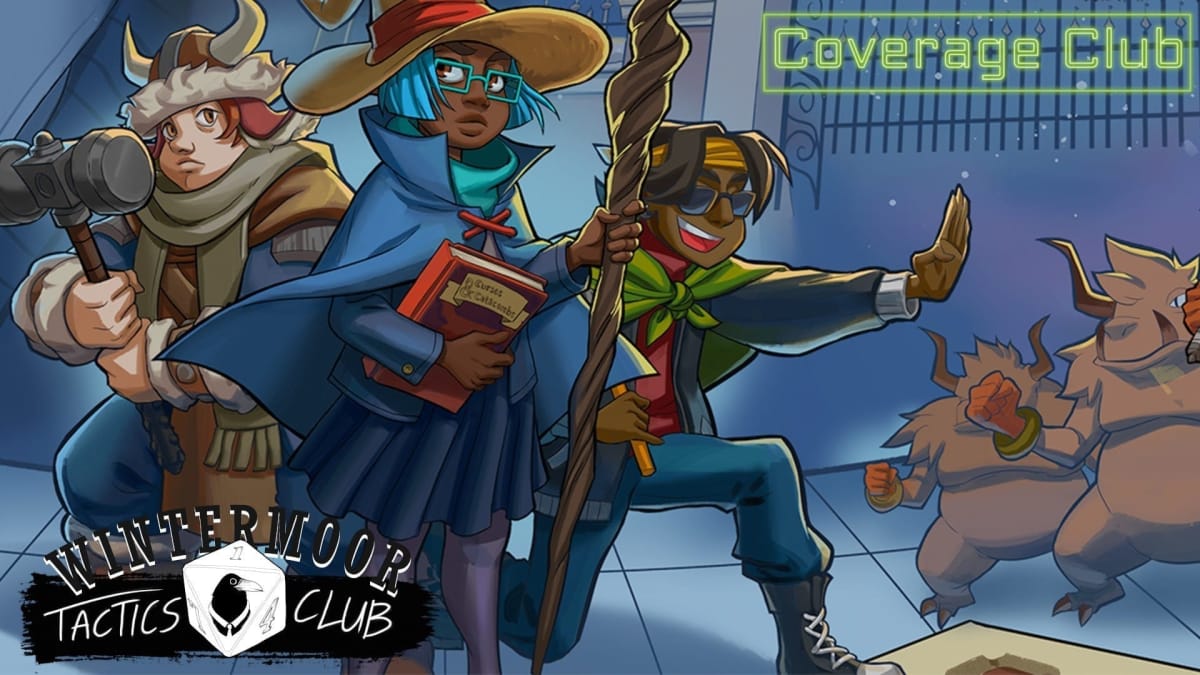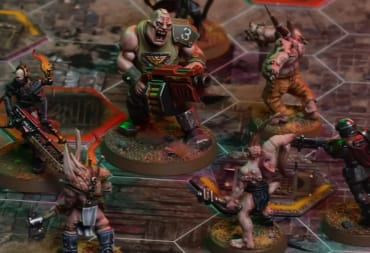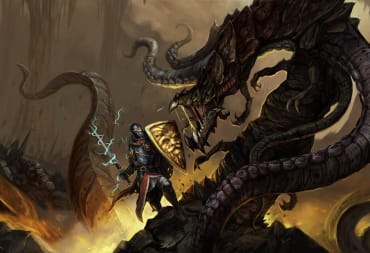Sometimes I feel nostalgic for school clubs, especially when they’d all gather together for special events to promote themselves and recruit new members. It was like a bustling festival on campus with plenty of booths to browse and explore, and that alone was enjoyable enough. Sometimes I feel even regretful, wishing I could go back and try other clubs, or invest in them more. Wintermoor Tactics Club affectionately pokes fun at that, featuring eccentric clubs for psychic detectives, monarchists, and equestrians who build a robot horse. The game also shows respect for student organizations and cautions against letting division run rampant, as well as touching upon other themes while mixing a tactics RPG with a visual novel.
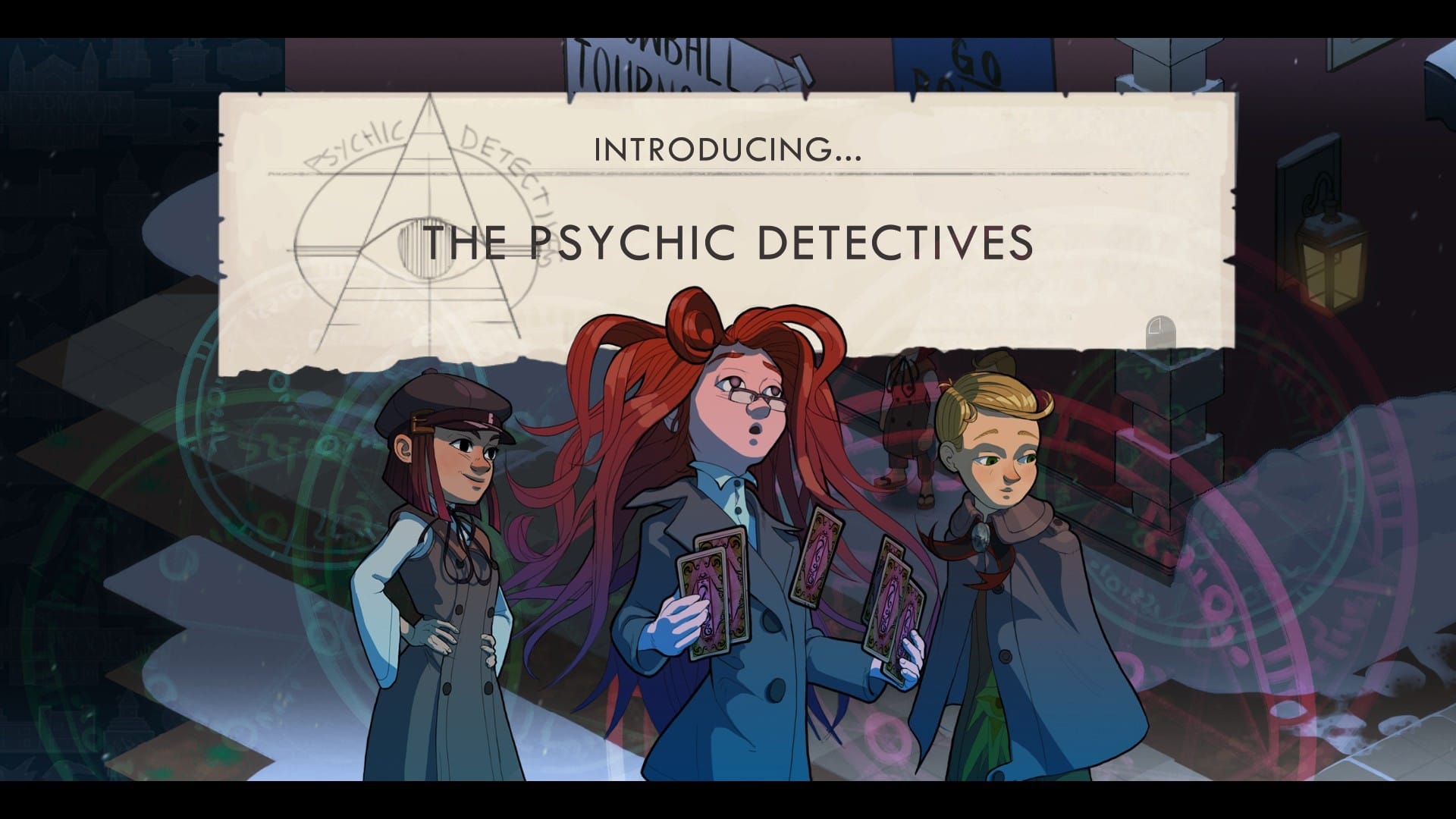
Players take on the role of Alicia, a student attending the eponymous Wintermoor Academy during the ‘80s. She finds solace in Tactics Club and plays a tabletop game called Curses & Catacombs with them while staying at the boarding school. When the principal threatens to disband any clubs who lose in a snowball tournament or refuse to compete, Alicia and her friends band together to protect Tactics Club. They apply strategy from Curses & Catacombs to the snowball fights and even interpret them as magic-fueled skirmishes from their favorite tabletop game. But Alicia isn’t just content to win; she tries to figure out why the principal is even holding this tournament, and recruits new members from defeated clubs.
Wintermoor entertains in multiple areas. The visuals are appealing, with strong illustration in character portraits during visual novel scenes. Drawings have great linework, good execution of different expressions, and excellent use of color. Character models for navigation and battle are well-structured in their isometric world. Limited animation and special effects in fights combine to make the whole thing visually work with a minimalist style. Members of the game's cast have neat designs, and it’s especially fun to see how they’re reimagined as more fantasy-based characters in Curses & Catacombs. Some wear new costumes, while others diverge even more with the addition of horns or fur. Overall, it feels like a nice fusion of aesthetics found in Japanese anime and Western animation.
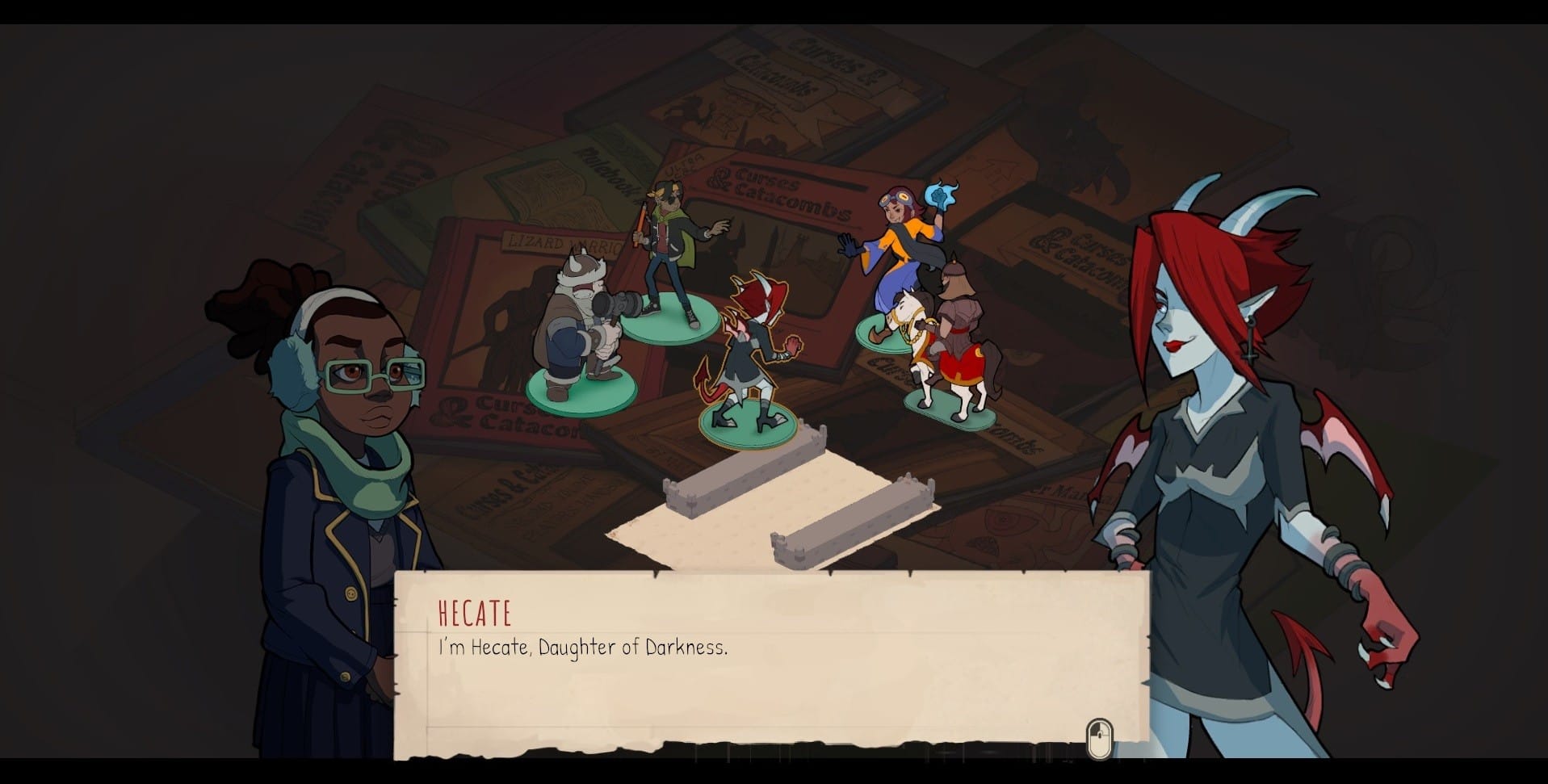
The core of Wintermoor’s music is a pleasant chiptune beat that winds throughout the game and becomes a comforting melody. This leads to an effective moment of unease when one of the main themes turns off-kilter in a pivotal sequence, supporting plot and offering a new remix of what’s become a familiar tune by then. But Wintermoor’s overall soundtrack becomes even more interesting when it diverges and incorporates new music, combining unity with variety. The beat accompanying the boss fight against the New Wave Appreciation Club appropriately sounds cool, but battle with the Animal Identification Club also features a vibrant score.
The tactics RPG elements in Wintermoor are meant to be accessible — the game even includes a no-fail mode that’s especially useful for those focused on the story — but they also offer some depth the longer you play. The options for accessibility are interesting, but there is also a surprising amount of nuance embedded in the combat system. At first fighting seems pretty straightforward — and honestly, that’s something I appreciate; simple controls that hit the sweet spot of satisfying battles with good momentum and an almost soothing rhythm are enjoyable for me. I’m also interested in RPG combat that can inspire more thought, and Wintermoor’s skirmishes ultimately felt thoughtful in their details.
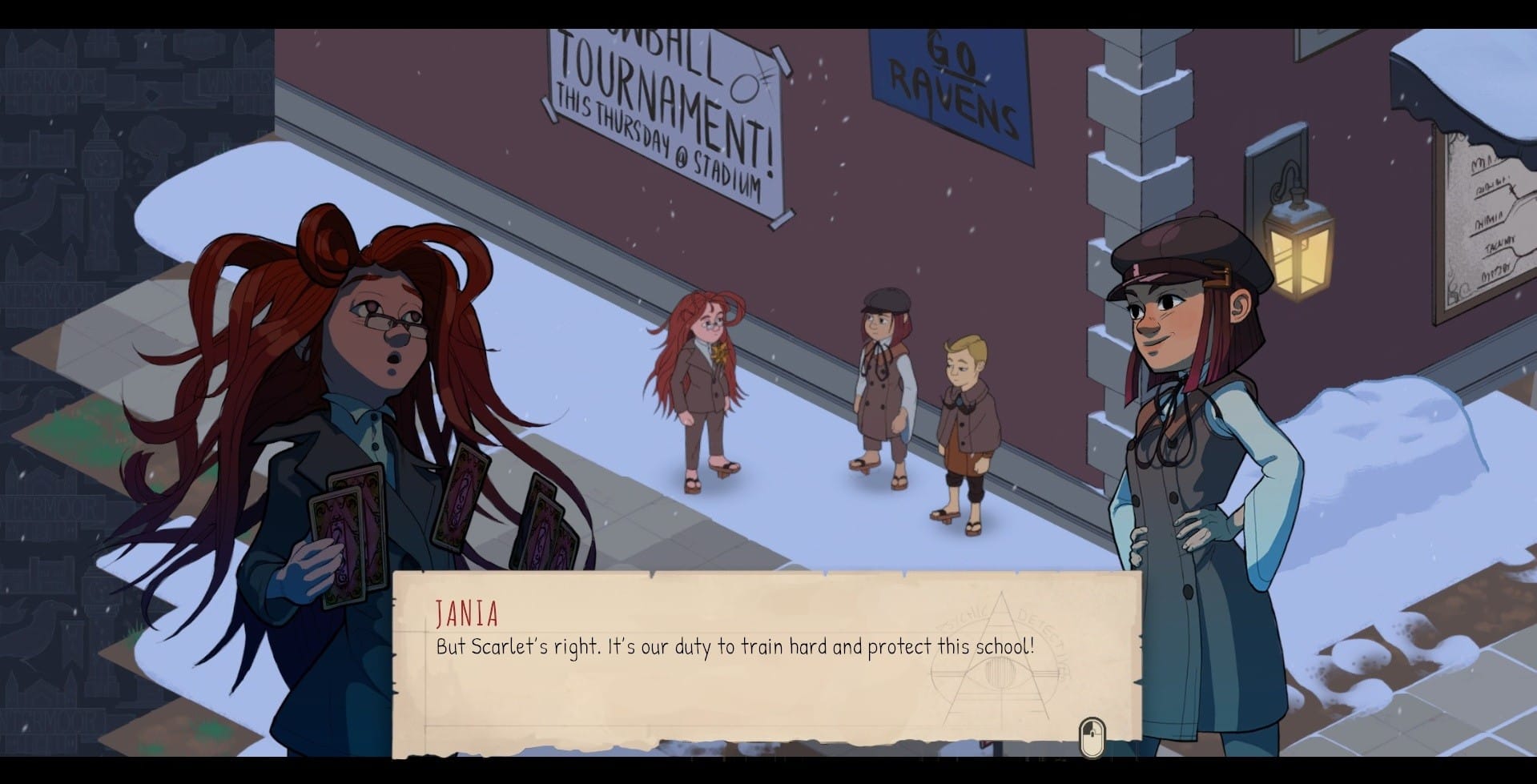
For instance, as I progressed through the game’s combat loop, I thought more about shapes — the shape of the battlefield’s terrain and the shape of my party’s target zones, all laid out on a strict grid. But it was a grid that could be played with. The game will mark the squares that players can strike, but several attacks possess chaining effects. If you can only reach the square next to an opponent with a lightning attack, your foe will still be electrocuted. With the right equipment, you can essentially turn your party members into lightning rods that take down even more foes without hurting your allies. Arm yourself with another piece of appropriate equipment, and strikes calculated to hit multiple foes at once will power a meter that can be used to trigger special attacks for the entire party. Strategies can be connected for a domino effect to seize victory in Wintermoor. While I normally prefer more physical fighters in fantasy, trying to figure out how to strike the most amount of enemies with magical doom from above became very satisfying.
Push and pull also became more prominent in my strategizing. The rogue Jacob proved very useful in maneuvering foes into more advantageous positions by pushing or pulling them with a shove or a grappling hook. Upgrade him with a skill to crack magical armor, and he’s a lifesaver. And in the more story-oriented parts of the game, he remains a reliable companion and a character with his own little nuances. While others might start to falter, the mischievous Jacob remains surprisingly and endearingly steadfast by your side throughout everything.
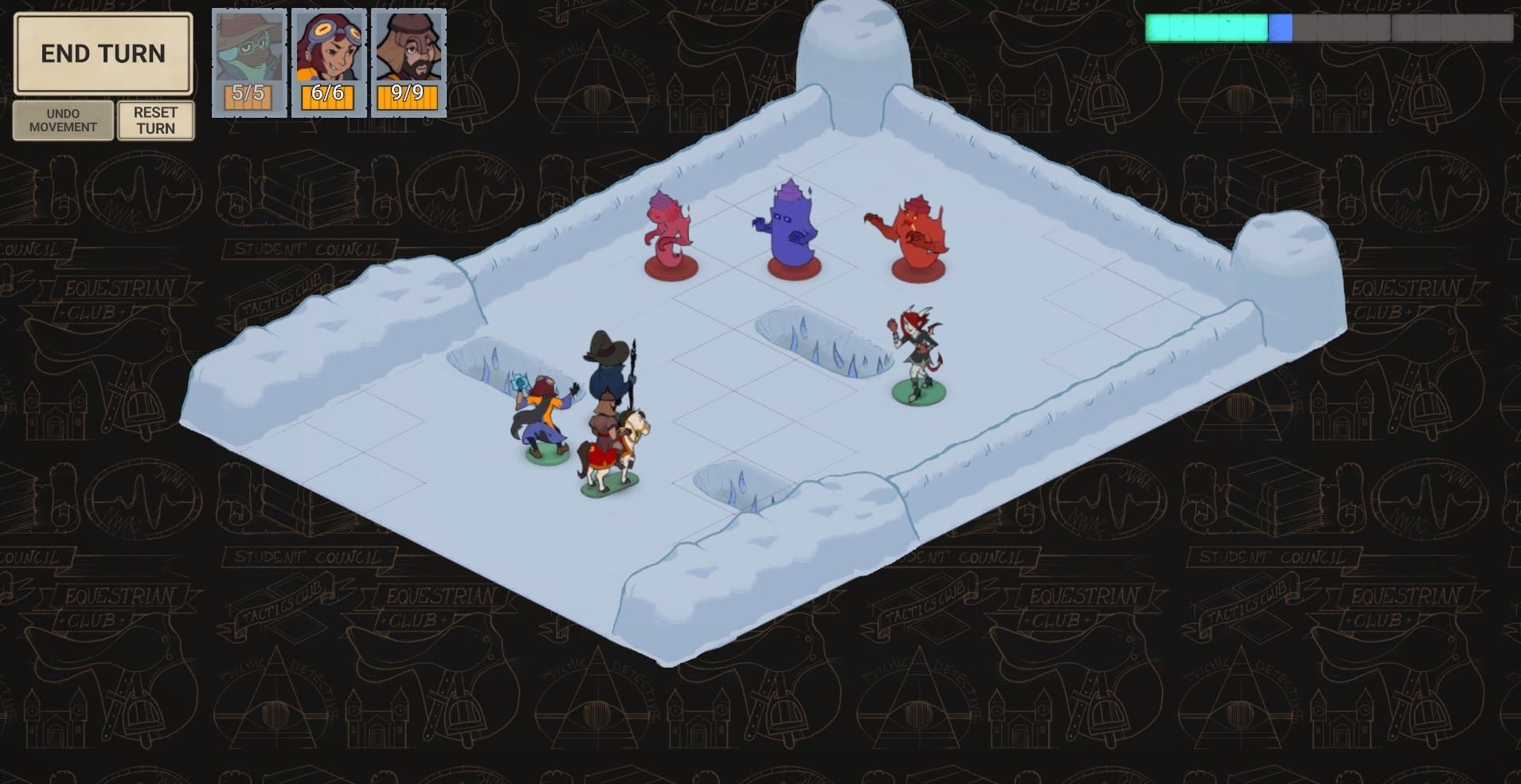
So many of the characters in Wintermoor are layered like that, with varying levels of depth. Alicia is an endearing and refreshing protagonist in both personality and design. While the game later allows you to completely replace the beginning party members with new characters, Alicia always remains the heart of the story, and the game is better for it. The influence of Steven Universe becomes more apparent as both Alicia and the game develop, but while the TV show and the game share some interesting themes, Alicia and the cast leave their own unique mark and make the story their own.
Other personal favorites include Jania and Baphomet, partly because they felt reminiscent of shonen anime. Jania, a member of the club for Psychic Detectives, is bold, spirited, and full of determination. With hints of supernatural adventures that happen offscreen during the game’s main plot and even before it started, she delightfully feels like a hero from another story. On the opposite side of the spectrum, Baphomet embodies elements of the more aggressive, stoic, and arrogant teammate archetype. Her character feels like a refreshing take on that archetype, adding her own nuances and layers of complexity. Frankly, the minute Baphomet threatened to take out someone’s voice box with only her fingernail while looking utterly bored, I became a fan. (To my delight, Jania and Baphomet later bond and end up together.)
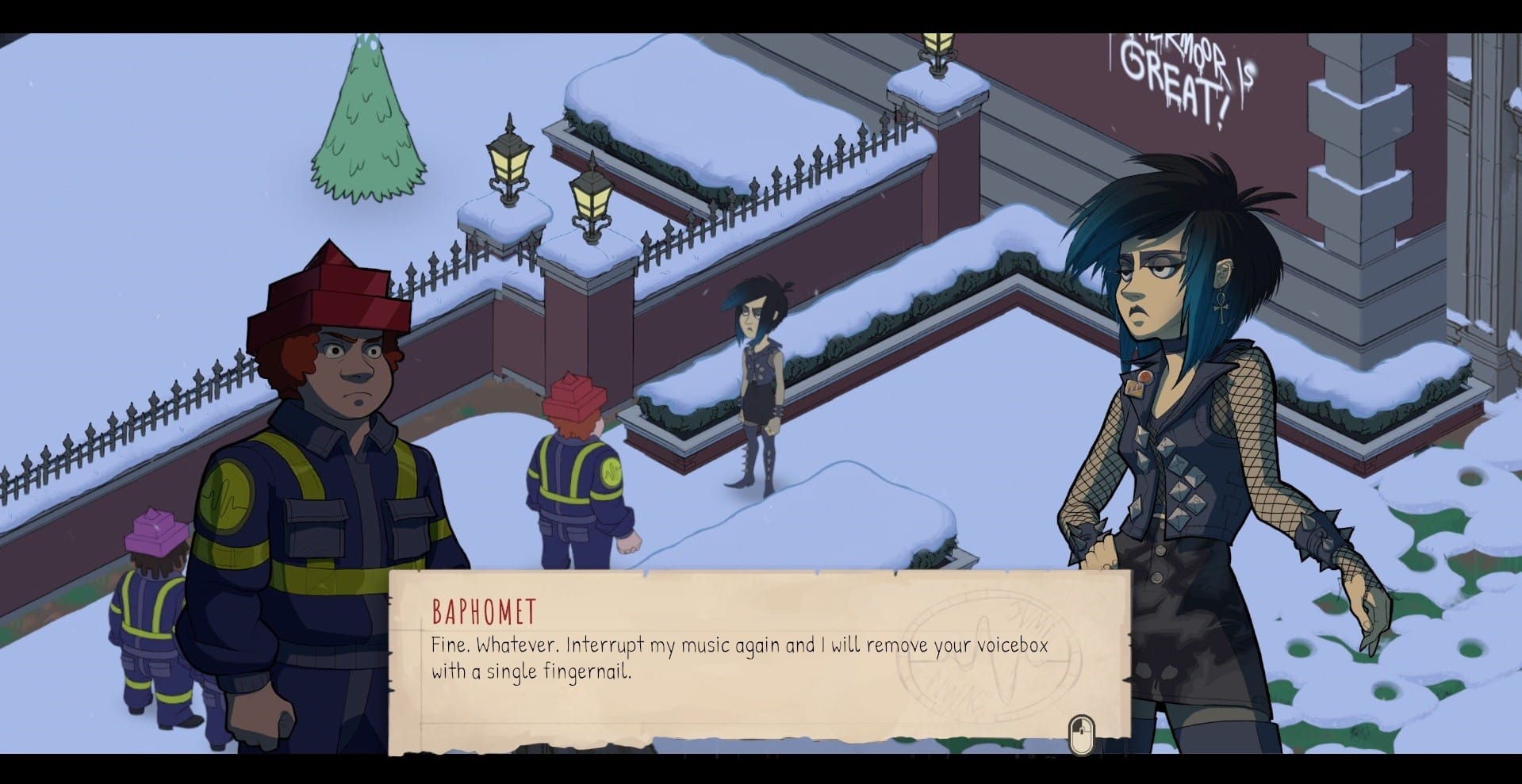
However, all of the game’s playable characters are great, and some contain nice twists and slow burn arcs. And while party members obviously get the lion’s share of character development, even smaller NPCs have certain attributes that make them distinct. There are even some with bizarre and amusing punchlines at the very end of the game. Taking the time to learn about classmates at Wintermoor Academy also has a particularly nice payoff later. Toward the game’s end, there’s a battle that can go more smoothly based on your knowledge of character relationships and even minor details about NPCs, such as verbal tics.
Given all this, Wintermoor Tactics Club genuinely feels hard to put down; I wanted to keep going to see what would happen next in the story, or recruit the next character. (In a nice move, boss fights and chapter introductions often serve as previews of new party members.) For even more combat, there are bonus missions that promise new upgrades for party members. In the end, Wintermoor’s story and characters go to interesting places. The game takes the time to create intriguing character dynamics, make plenty of jokes, kickstart wild adventures, and touch on harsher topics while offering hope wrapped up in metaphors or something more overt. The game does all that and more. After Wintermoor finished with an entertaining and sweet conclusion that also potentially recontextualized everything that came before, I was left wanting more. It wasn't about the game’s length, which didn’t feel too short or too long. It’s just that by the end, I wasn't ready to say good-bye to Wintermoor Academy.
TechRaptor covered Wintermoor Tactics Club on PC via Steam using a copy provided by the developer. The game will also be available on PlayStation 4, Xbox One, and Nintendo Switch at a later date.
Have a tip, or want to point out something we missed? Leave a Comment or e-mail us at tips@techraptor.net
